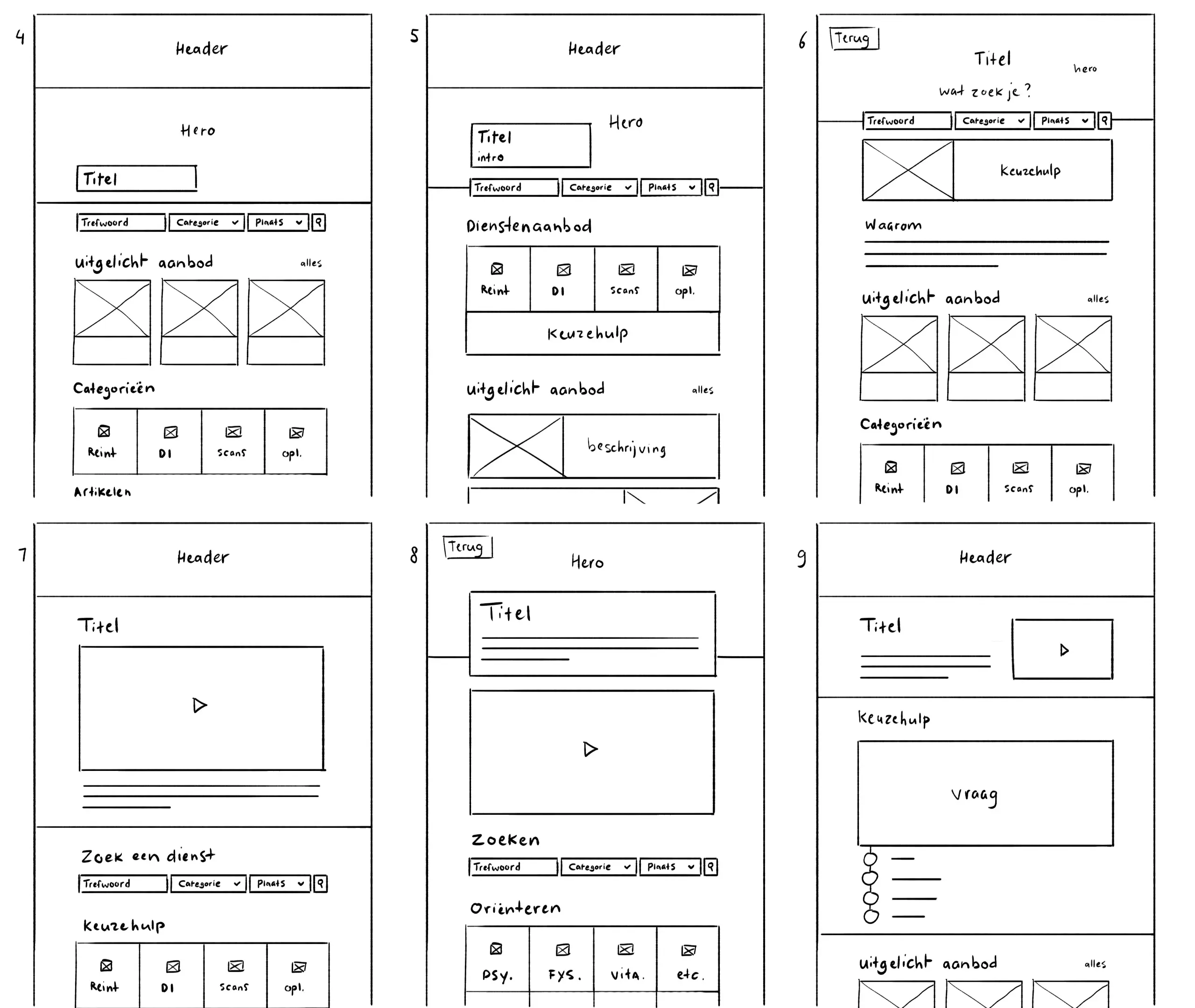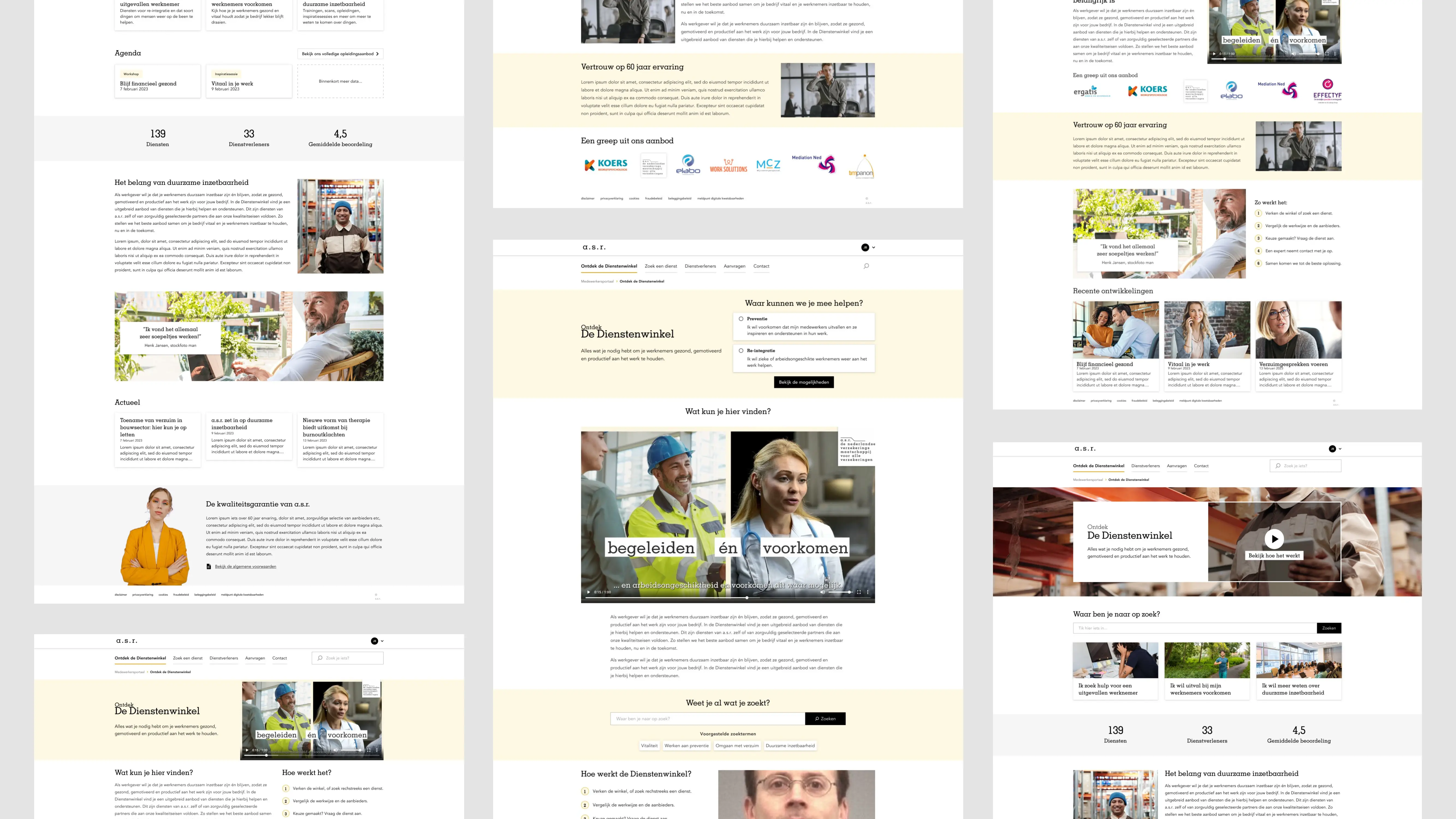
For insurance agency a.s.r. I helped design the Dienstenwinkel (services store), an online platform for employers, casemanagers, advisors, and more, to discover and order services that a.s.r. or trusted third parties provide. This could be care for sick employees, trainings, or different services to keep their companies running smoothly.
The problem
When an employer gets word that one of his employees can no longer work (be it because of physical or psychological issues), they call their case manager at a.s.r. The case managers have a database of possible healthcare services to select from in order to help the employee feel good again. And this database? It was an Excel sheet. AND one they had to manually update. So that was not ideal, plus: the employer had no access to it, which meant they were not aware of all the possibilities, and were also not able to select anything without the help of a case manager. a.s.r. wanted to automate this process.
The process
I was brought on board at the start of the project, together with a business analist. Together, we interviewed stakeholders to get an idea of all the use cases, and made flowcharts and wireframes to try to get a handle on the scope of our MVP. Our first version was aimed at the case managers, but we knew we eventually also had to make it available to employers, intermediaries, and the service providers themselves.This could have easily exploded the scope, but we decided to first focus on the most pressing use case, that of the case managers.
The main wishes of the case managers were: provide an easily browsable 'store' to find services, and a backend to easily add and update services. So that is what we built as our MVP. We identified the main categories that all these services would fall into, what the most important properties of a service are so we can surface those as early as possible in the user journey, and which filters would allow users to quickly narrow down their search.
We built several prototypes of this storefront in OutSystems and asked the case managers if it fit their needs. Pretty quickly they were happy with what we had, so we launched the MVP internally to get real-world feedback from users. That valuable feedback drobe our iterations for several more months, until the system was robust enough for them to transition to it officially. Then we started work on an automated service request flow, so that we could onboard employers and they could select services on their own without needing the case managers.
This meant that the internal application suddenly became semi-public (employers still had to login thorugh their insurance portal), so we had to spend more thought on presenting the store in a more visually rich and easier to understand way. Together with the research department we conducted user tests on Figma prototypes, and used that feedback to shape the next version. After about six months we were happy with what we had. Now employers could request services on their own, and that reduced the workload of the case managers even further.
In the final year of the project we expanded the store in several critical new ways:
- We added a section where case managers could track service requests, see all the relevant details, and request and sign documents, which made the third-party tool they were using for that purpose all but obsolete.
- We unlocked access for more types of users, like healthcare professionals and consultants.
- We iterated on the homepage to provide multiple versions depending on what type of user visited the store.
- We expanded the backend with more ways to manage and track data.



The result
Because we operated as an independent team, we were able to launch an MVP within four months, and built it out into a profitable platform in the two years following. After its first year, the 250+ services on offer had generated 3000+ request from employers and consultants, resulting in over one million in revenue, and a lot of happier and healthier employees.